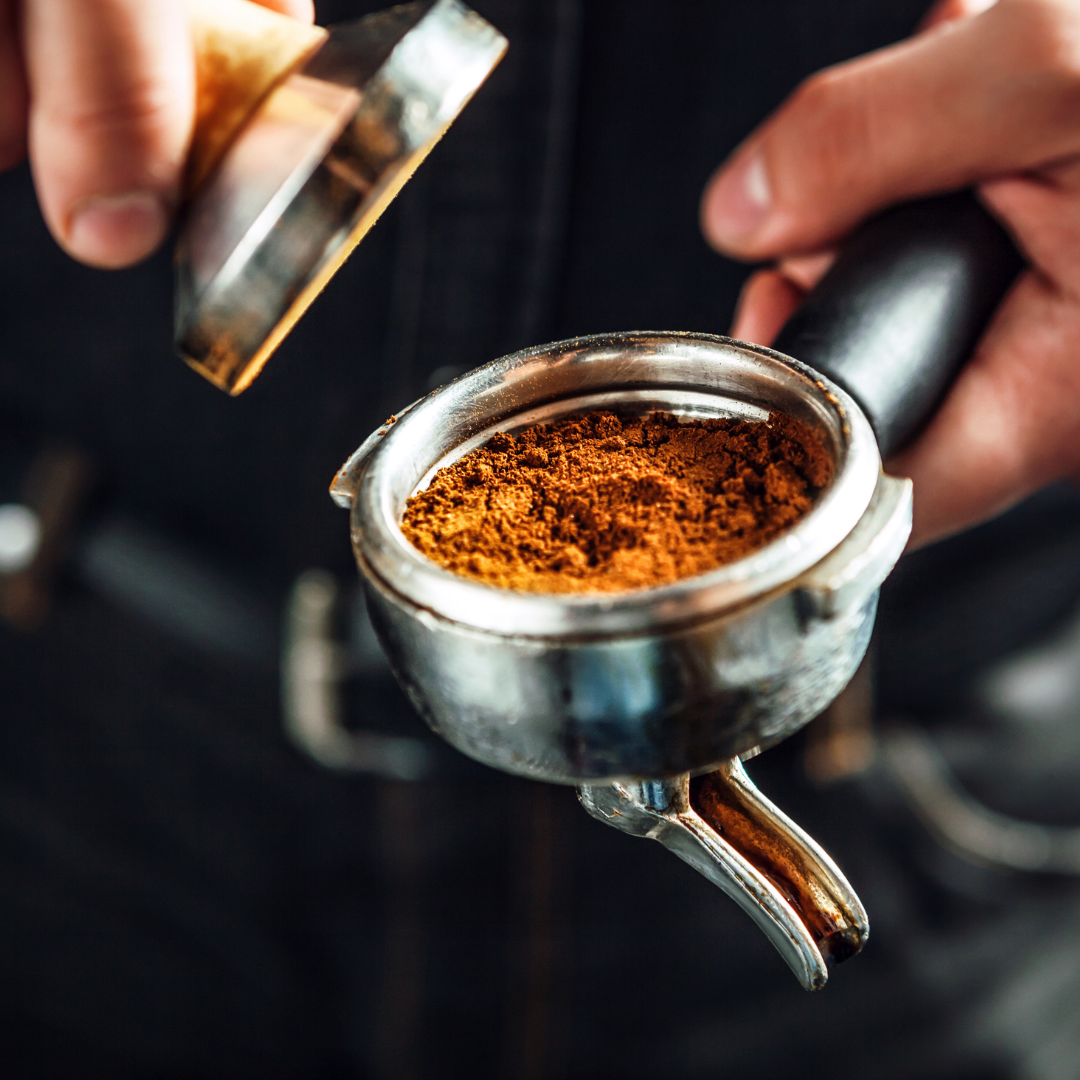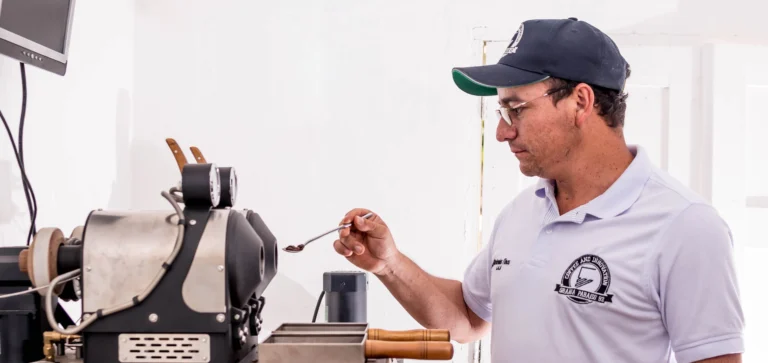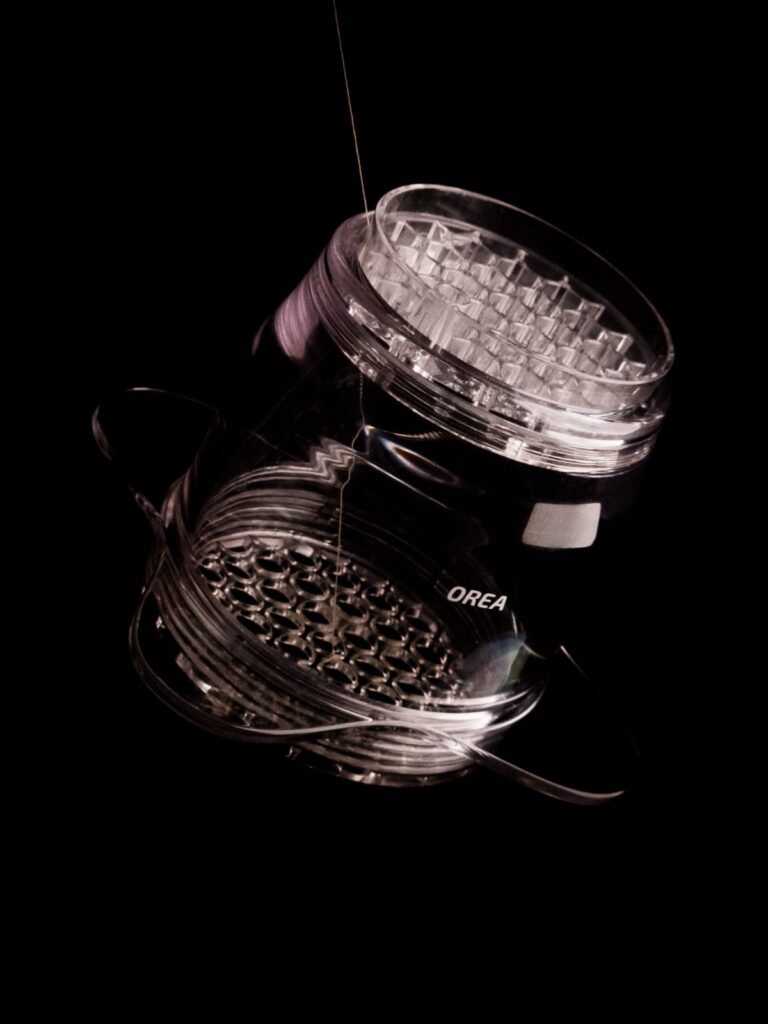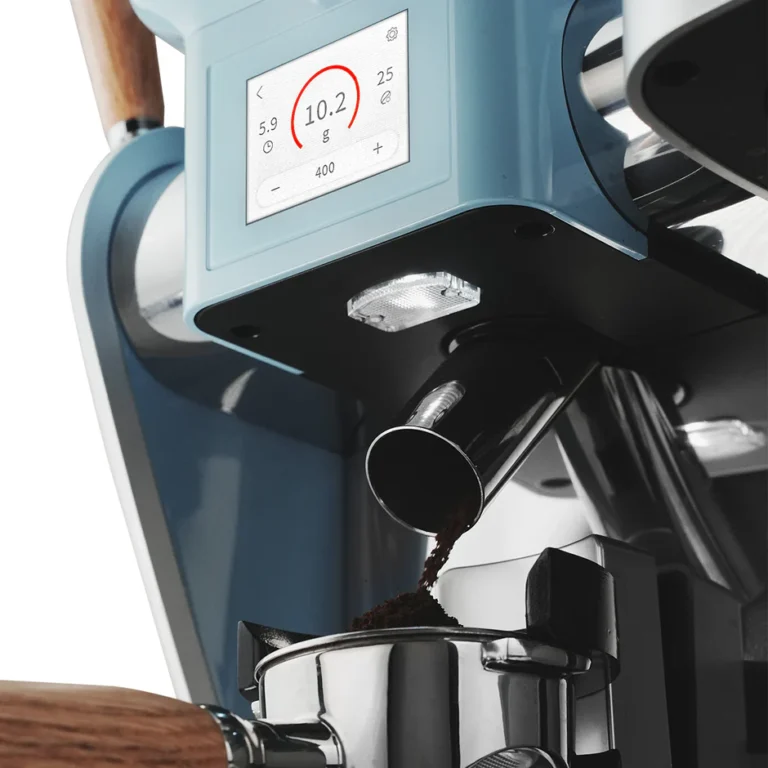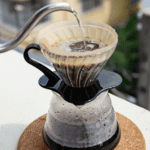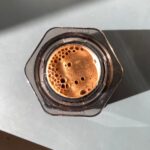Today we will walk through how to dial in espresso for beginners.
How it should taste, how to dial in and adjust certain grind settings, and how changing different variables will affect the taste of our coffee. I also share my top tips and tricks for getting the best espresso possible.
Dialling in espresso is a day-to-day routine of every barista, something that is essential to crafting the best tasting and best quality coffee possible.
For coffee industry professionals, dialling in is an easy process that they’ve most likely learnt from being on the job, being taught by someone, or that they’ve learnt themselves. But mastering the art of dialling in espresso can be hard without the necessary knowledge and can also be a very frustrating activity, especially when sometimes you waste a whole bag of coffee trying to dial in (trust me I’ve been there many times it’s not just you.)
So I’m here to help you dial in your espresso in the simplest way possible. Whether it’s at your place of work, a café, your office or your home. Whether you have an espresso machine that’s big and fancy or a home espresso machine, it doesn’t matter; the concept is all the same and once you nail it eventually it will become an easy habit, and you’ll nail it every time. But remember every coffee will have a different grind size and you’ll need to amend your grinder and recipe every time you change your coffee beans.
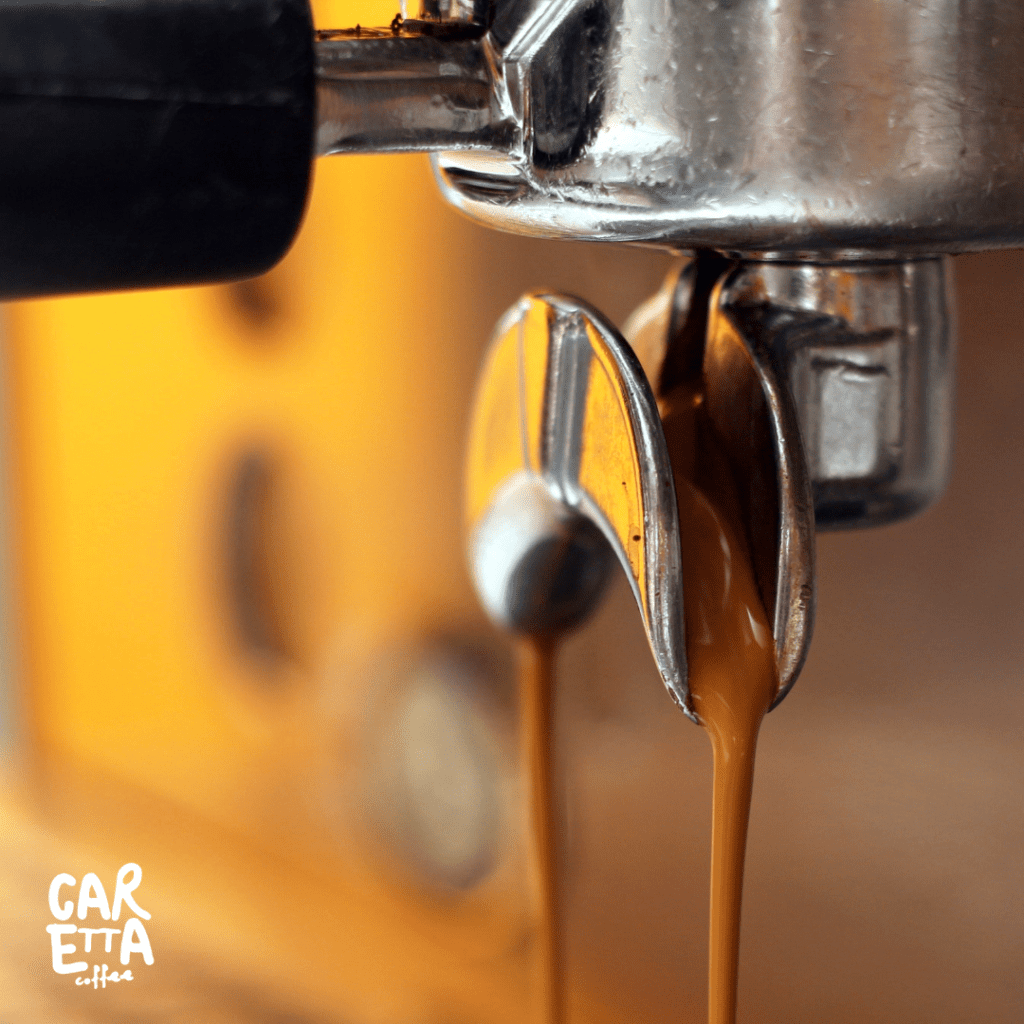
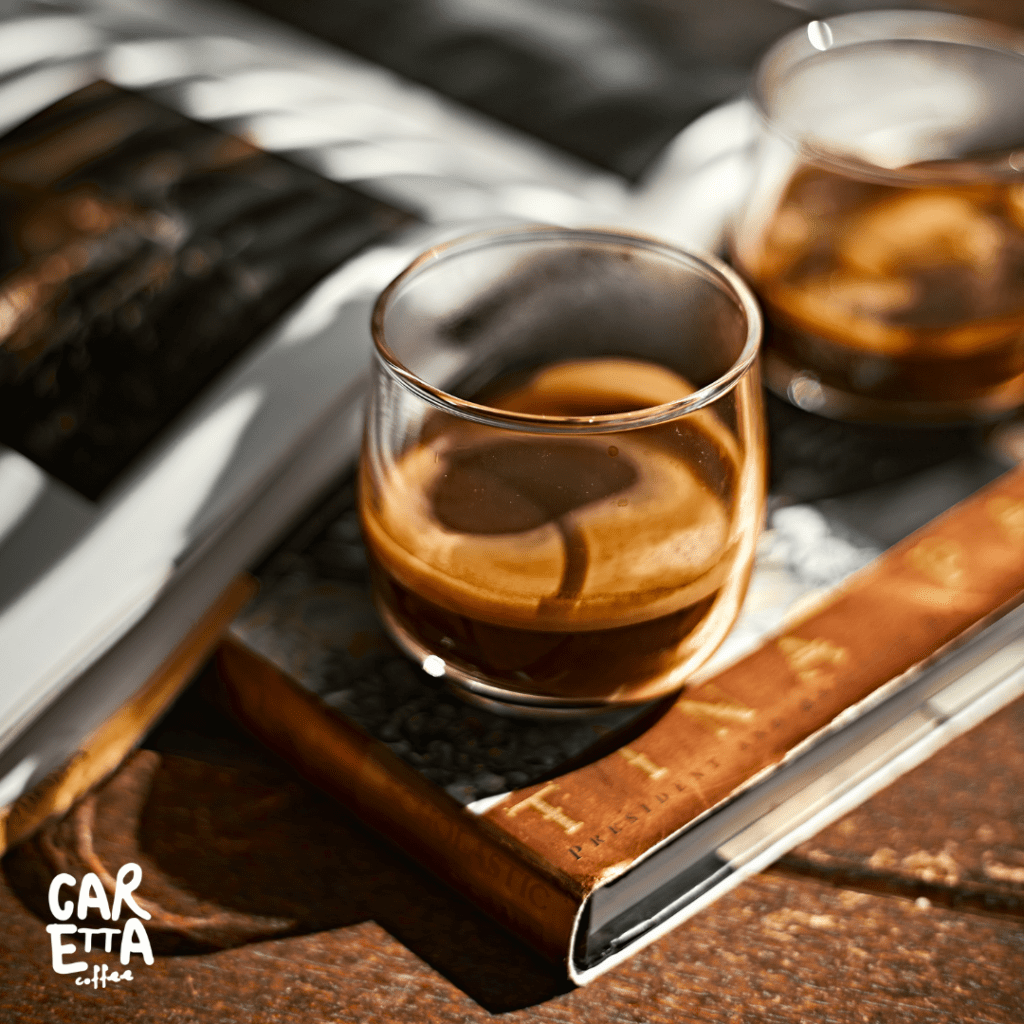
So What is Dialling in?
Dialling in is the process of getting the most out of our coffee, extracting the best flavour possible, and making it as tasty as we can. This is done by using the right amount of coffee (our coffee dosage) and the correct amount of water (our yield) to extract the correct amount of soluble flavours from our coffee in the right amount of time without allowing our coffee to be over or under-extracted.
To dial in correctly and achieve the above, we must change certain variables. These variables are coffee dosage (amount of coffee used), yield (the amount of water), brew time (how long our coffee takes to extract) and our grind size (how large or small our coffee particles are), and all of these have a huge impact on what our espresso will taste like.
First, we will talk about the variables and how it changes the flavour of our coffee.
Changing our grind size is one of the most important variables we need to focus on to get the best out of our coffee.
The Differences Between Over-Extracted and Under-Extracted Coffee
When coffee is under-extracted, our coffee will often taste sour, syrupy and salty; on the reverse, when it is over-extracted, it will taste bitter, dry, astringent and empty. Both don’t taste pleasant, but I’m sure we’ve all tasted coffee that’s been over and under-extracted before. I’m here to help you identify how it’s supposed to taste and how to adjust your coffee to get the best brew yet.
Espresso should taste balanced, sweet and pleasant to drink but it takes time to know if you’ve got it right and a process of developing your pallet to how certain coffees should taste. In summary, they should all be very tasty.
Over-extracted coffee would essentially mean your coffee is taking too long to extract. Your coffee particles are too fine and there are no air pockets to allow water to push through your coffee bed to extract a nice, even flavour from the coffee.
Under-extracted coffee means your coffee is extracted too quickly. Your coffee is too coarse and due to your coffee particles being too large, there are too many air pockets to allow water to pass through your coffee bed too quickly resulting in a syrupy, sour and salty coffee.
To achieve this, you must change the parameters of the espresso. The three main parameters are the dose, yield and brew time, all of which have a massive impact on flavour.
The easiest way to make our espresso taste right is to follow a recipe. Just like in cooking at home, you follow a recipe, and if you follow it right it will hopefully taste great.
Espresso Recipe
Below is the espresso recipe that we will go through today and help you understand what you need to change to get this recipe nailed on your machine.
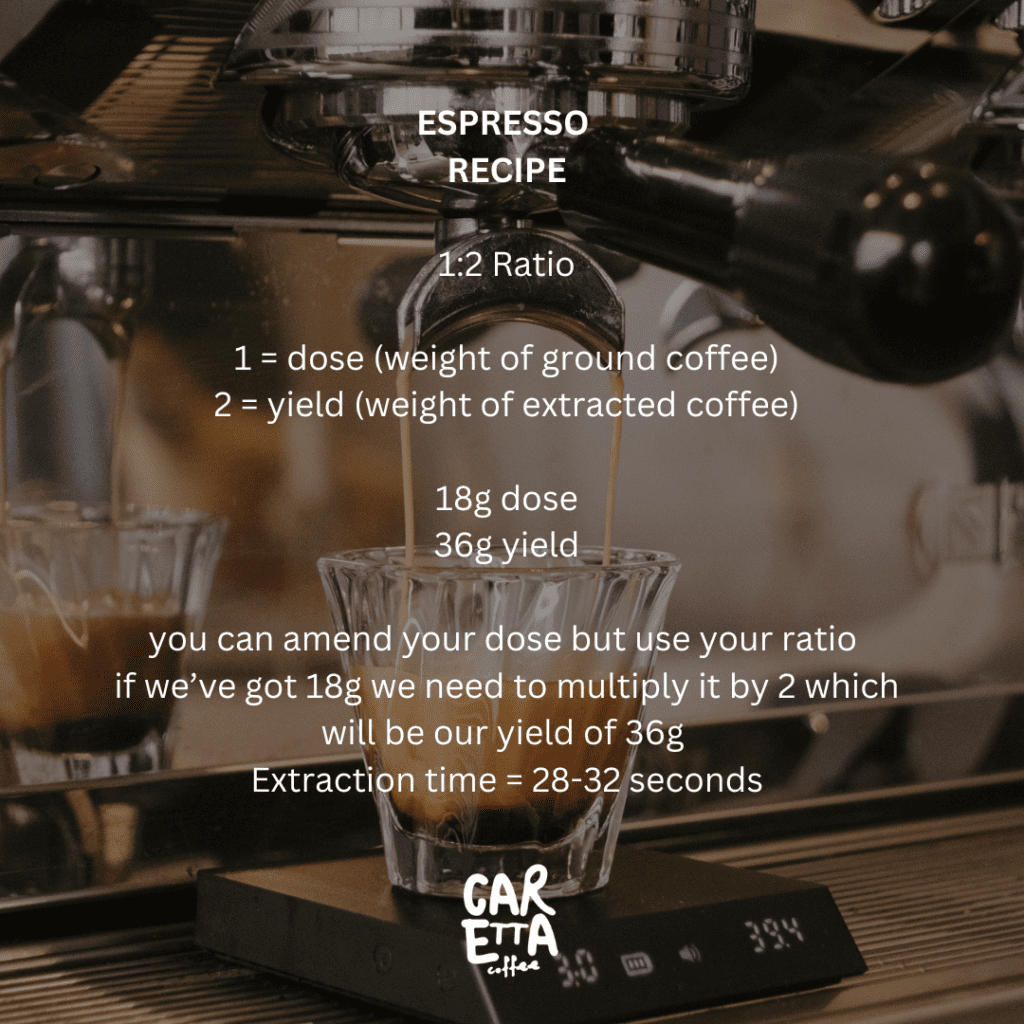
As stated in the above recipe you can change your dose to achieve a different flavour – i.e. if your dose is 20g of ground coffee, it will need to have a yield of 40g with a slightly higher extraction time of around 30-34 seconds. Sometimes different coffees need different dosages, I made a recipe recently for a pacamara coffee from El Salvador, pacamara coffee beans are very large, so we ended up going with a 19.7g dose and a yield of 40g with an extraction time of 34 seconds.
Now we will get on to extracting some espresso following the above recipe, you will need the following things.
- Well rested speciality coffee beans find some here
- An espresso machine
- A tamper
- A portafilter with an 18g basket
- A set of coffee scales with a timer (you can pick these up are a very good price by clicking here)
- Espresso cups
- A coffee grinder – a built-in grinder for home is perfect too
- Use your scales to weigh your coffee grounds and to weigh and time your extracted espresso on your machine.
Now we’ve got your equipment sorted we will go through how to achieve the espresso recipe and get your coffee tasting the best it’s ever tasted.
Dosage
The dose is the amount of dry coffee that goes from beans to powder once ground, these are placed into your portafilter measured in grams i.e. 18g which is then tamped and then placed into your espresso machine.
Your dose is used to calculate your yield. As in our recipe mentioned earlier on, if we have an 18g dose, we need to double our dose and that equals our yield which will be 36g. Your dose should only be increased so you can get a better ratio of coffee to water (for example a 20g dose might taste nicer with a 40g yield.)
If you want to increase your dose to extract more flavour do it in smaller increments, i.e. 0.2g the same applies to reducing your dose if your coffee is tasting a bit too bitter or intense. Remember increasing or decreasing your dose will result in the need to change your yield and your extraction time.
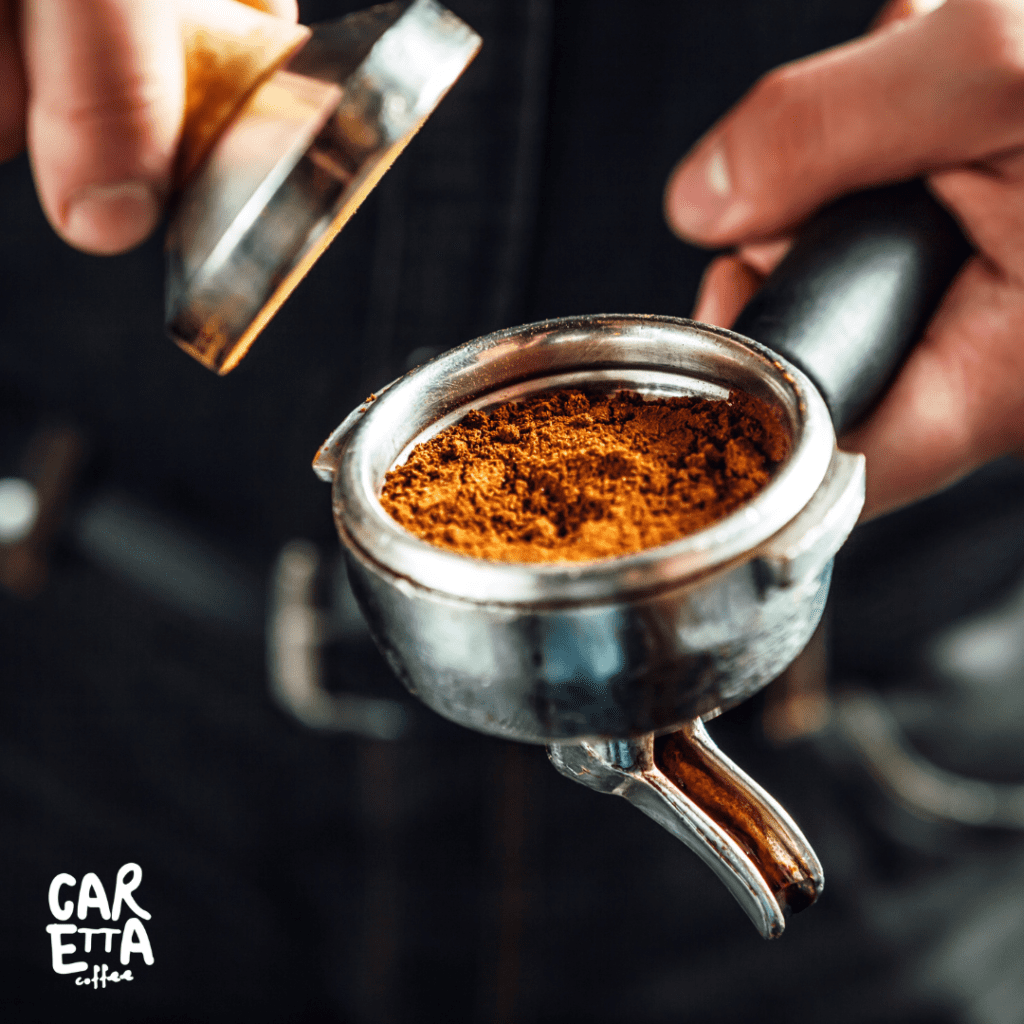
Yield
Yield is the weight of wet drinkable espresso that has been extracted from the coffee.
Higher yield results in more water passing through the coffee, a higher extraction level, the higher the amount of water (yield) the more watery our espresso will be.
Remember from our recipe earlier, that our 1:2 ratio of 18g is our dose, then we multiply it by 2 which equals our yield.
Brew Time
Most coffee shops extract coffee within 30-40 seconds and some 26-34 seconds, it all depends on what dosage you’re working with and what coffee you’re brewing with when you’re dialling in your espresso. Espresso extracted short will taste more sour and acidic with less body, and espresso extracted longer will have more body and sweetness but also more bitter.
Grind Size
So how do we control the way our coffee extracts? This is where the grind size comes in.
As we said before, the smaller the grind size, the finer our grinds will be and the larger our grind size the coarser our grinds will be.
We need to follow the recipe mentioned above, by changing our grind size in small increments, the finer you go, the slower your coffee will extract, and the coarser you go, the quicker your coffee will extract. So using this we can change our grind settings in order to achieve our perfect espresso recipe.
Here’s a little example:
If our dose is 18g we would want our yield to be 36g within a brew time of 28-32 seconds.
And if we grind our coffee with 18g in our portafilter, we go to extract it in our cup and it comes out in 20 seconds. This will be under-extracted, it’s come out too quickly which isn’t what we want. So .. How do we change it to make it right? We adjust our grinder to make it finer, do it in small increments, making sure when we change our dial on our grinder we purge out our grinder, meaning – change your grind setting, then grind your coffee, then dispose of the coffee, then grind your coffee again, then tamp and extract – this clears out our grinder burrs of any old coffee that may be in our grinder.
Once you’ve made your grinder finer, extract another shot, and do it again and again until you’ve reached your desired 36g out in 28-32 seconds – remember to use your scales to measure this.
If it’s coming out too slowly, move your grind setting coarser (larger number) and extract more shots until you get your desired 36g of coffee out within the 28-32 second brew time.
Keep on doing this, play about with the dosage, the extraction time and ratio and see what types of espresso you’re getting. As I’ve said before coffee is a journey of learning, building and enjoyment, have fun, never get frustrated and keep on adjusting until you get it right.
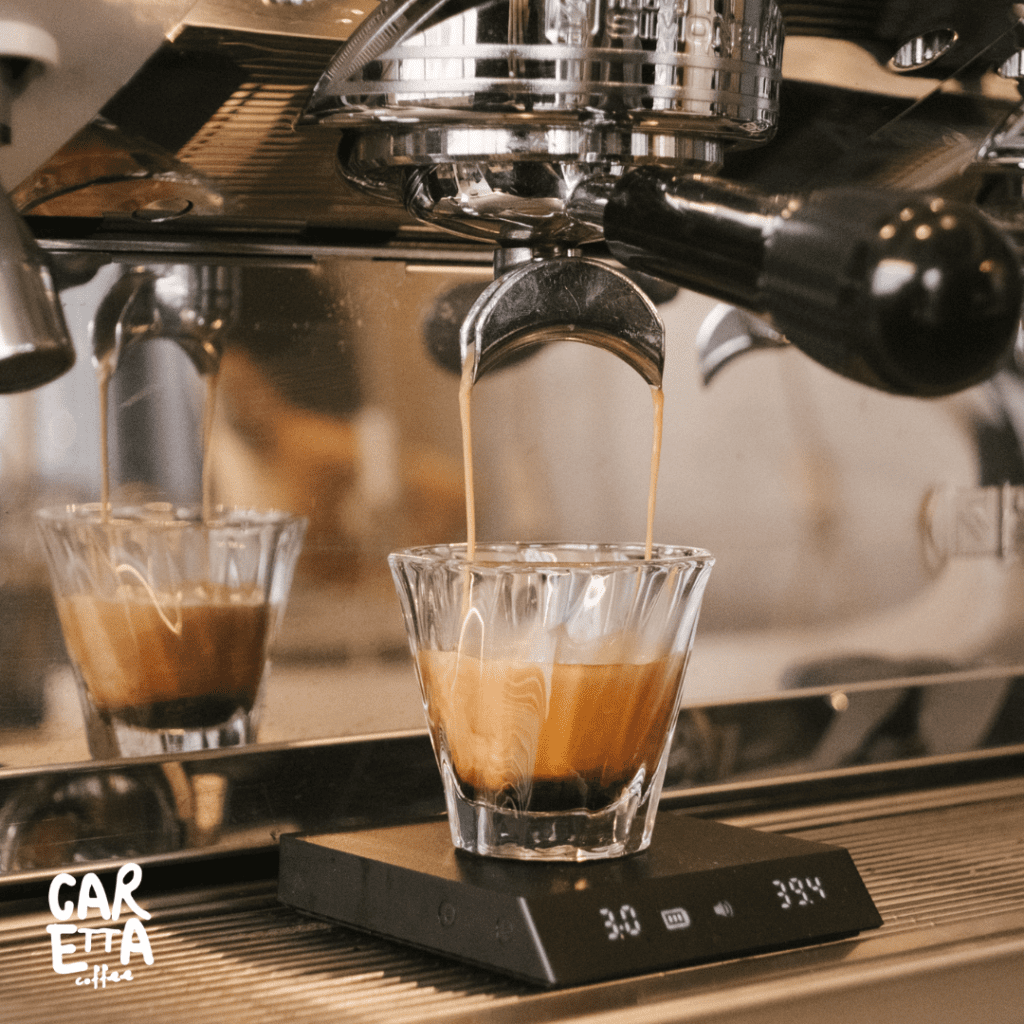
Tasting Our Espresso
Finally, we will move on to tasting our espresso
Once you’ve punched in your dose, got your desired yield, and decided on an appropriate brew time, you need to taste your espresso to make sure it tastes good.
Have you ever had an espresso that tastes acidic from the get-go? Have a little go at this, once you’ve nailed your recipe.
Grab an espresso spoon, or a teaspoon and spoon some of the espresso crema onto the spoon. Have a taste….
Doesn’t taste good does it, it’s a build-up of tiny little bubbles of carbon dioxide built up by pressure on your espresso machine.
Now try your espresso but stir it a few times with your spoon. For my first sip, I like to slurp it like a baby would on a milkshake, which sprays my pallet with creamy espresso goodness, allowing me to identify what I’m supposed to be tasting. Then take a 2nd, 3rd, 4th sip and over time once your pallet adjusts it’s a creamy, sweet, balanced and lasting aftertaste which is the delight of coffee we’re looking for.
And that’s it for today’s guide on dialling in espresso for beginners. Keep on practising, keep on tasting and playing about with all the different variables we’ve discussed here today.
I will be making a more in-depth dialling in the espresso guide very soon, but for now, keep improving and I hope this guide has helped you produce better espresso.
Thank you for reading, I’ll catch you on the next one.
